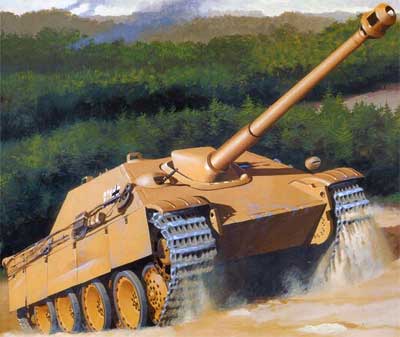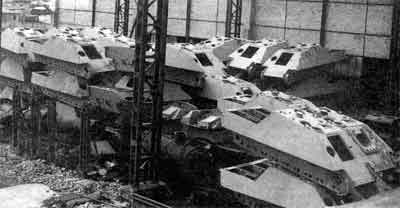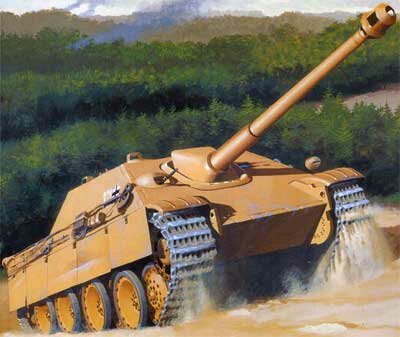
Tank destroyer Panzerjager 8,8 cm auf Panther I (until 29.11.1943/173/XNUMX) Sd.Kfz. XNUMX Panzerjager V “Jagdpanther”
Content
Tank destroyer Panzerjager 8,8 cm auf Panther I (up to 29.11.1943/XNUMX/XNUMX) | ||||||||||||||||||||||||||||||||||||||||||||||||||||||||||
| Crew | 5 |
| The weight | 45,5 t |
| total length | 9,86 m |
| Body length | 6,87 m |
| Width | 3,29 m |
| Height | 2,72 m |
| Engine | Maybach 12-cylinder petrol engine HL230P30 |
| Power | 700 l. from. |
| Fuel supply | 700 l |
| Speed | 46 km / h |
| Power reserve | 210 km (highway), 140 km (off-road) |
| Main armament | 88-mm gun PaK43 / 3 L / 71 |
| Additional weapons | 7,92 MG-34 machine gun |
| Reservation | |
| Body forehead | 60 mm, angle of inclination of armor 35 degrees |
| Hull board | 40 mm, angle of inclination of armor 90 degrees |
| Rear corps | 40 mm, angle of inclination of armor 60 degrees |
| Hull roof | 17 mm, angle of inclination of armor 5 degrees |
| Tower forehead | 80 mm, angle of inclination of armor 35 degrees |
| Tower board | 50 mm, angle of inclination of armor 60 degrees |
| Rear of the tower | 40 mm, angle of inclination of armor 60 degrees |
| Tower roof | 17 mm, angle of inclination of armor 5 degrees |
The performance characteristics of Jagdpanthers
Tank destroyer "Jagdpanther".
Technical description
Hull and cabin "Jagdpanther".
The body is welded from rolled heterogeneous steel plates. The mass of the armored hull is about 17000 kg. The walls of the hull and deckhouse were located at different angles, which contributed to the dissipation of the kinetic energy of the shells. The welded seams were additionally reinforced with tongue and groove piles.
| Early type hull | |
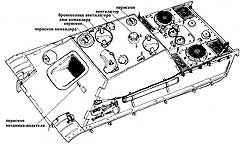 |  |
| Late type hull | |
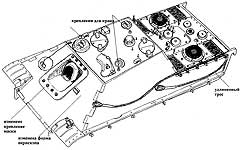 |  |
| Click on the diagram to enlarge | |
The standard hull of the PzKpfw V “Panther” Sd.Kfz.171 tank was used for the production of the Jagdpanther. In front of the hull there was a gearbox, to the left and to the right of it were the driver and gunner-radio operator. At the place of the gunner-radio operator in the frontal armor, a 34-mm MG-7,92 course machine gun was mounted in a ball mount. The driver-mechanic controlled the car with the help of levers that turned on or off the final drives. To the right of the driver's seat were the gearshift and handbrake levers. On the sides of the seat were the levers for emergency control of the onboard brakes. The driver's seat was equipped with a dashboard. A tachometer (scale 0-3500 rpm), a cooling system thermometer (40-120 degrees), an oil pressure indicator (up to 12 GPa), a speedometer, a compass and a clock were mounted on the board. All of these devices were located to the right of the seat. The view from the driver's seat was provided through a single (double) periscope, displayed on the frontal armor. For cars of late production series, the driver's seat was raised by 50 mm-75 mm.
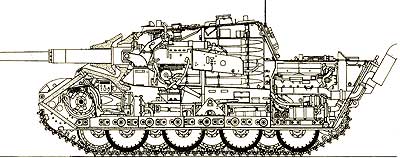
Click on the Jagdpanther layout to enlarge
To the right of the gearbox was the place of the radio operator. The radio station was mounted on the right wall of the case. The gunner-radio operator's view from the spot was provided by the only Kgf2 optical sight for the course machine gun. The 34 mm MG-7,92 machine gun was housed in a ball mount. 8 bags with strips of 75 rounds were hung to the right and left of the radio operator's seat.
The central part of the vehicle was occupied by the fighting compartment, where there were racks with 88-mm rounds, the breech of the 8,8 cm Rak43 / 2 or Rak43 / 3 cannon, as well as the seats of the rest of the crew: the gunner, loader and commander. The fighting compartment was closed on all sides by a fixed wheelhouse. On the roof of the cabin there were two round hatches for the crew members. In the rear wall of the wheelhouse there was a rectangular hatch that served to evacuate the crew, eject spent cartridges, load ammunition and dismantle the gun. An additional small hatch was intended for ejection of spent cartridges. In the rear of the hull was the engine compartment, fenced off from the fighting compartment by a fire bulkhead.
The engine compartment and the entire rear of the hull fully corresponded to the serial Panther. Some machines had a container for spare parts attached to the back of the cabin.

Booking scheme “Jagdpanthers”
Engine and transmission of a tank destroyer.
The Jagdpanther self-propelled tank destroyers were powered by Maybach HL230P30 engines manufactured by Maybach in Friedrichshafen and Auto-Union AG in Chemnitz. It was a 12-cylinder V-shaped (camber angle of 60 degrees) in-line liquid-cooled carburetor engine with overhead valves. Cylinder diameter 130 mm, piston stroke 145 mm, displacement 23095 cm3. Cast iron pistons, aluminum cylinder block. Piston play 0,14 mm-0,16 mm, valve play 0,35 mm. Compression ratio 1:6,8, power 700 hp (515 kW) at 3000 rpm and 600 hp (441 kW) at 2500 rpm. Dry weight of the engine 1280 kg. Length 1310 mm, width 1000 mm, height 1190 mm.
The cooling system included two radiators located to the left and right of the engine. The radiators were 324x522x200mm in size. The working surface of the radiator is 1600 cm2. Maximum coolant temperature 90 degrees, operating temperature 80 degrees. The circulation in the cooling system was provided by a Pallas worm pump. Cooling system capacity 132 l.

"Jagdpanther" early type
Air circulation in the engine compartment was provided by two Zyklon fans with a diameter of 520 mm. Fan speed fluctuated between 2680 and 2765 rpm. The fans took power from the crankshaft through a bevel gear. Each fan drove air through two air filters. Fans and filters were manufactured by Mann und Hummel in Ludwigsburg. In the overhead armor plate there were four additional air intakes, taken away by a metal mesh.
The engine was equipped with four Solex 52 JFF IID carburetors. Fuel - gasoline OZ 74 (octane number 74) - was poured into six tanks with a total capacity of 700 (720) liters. Fuel was supplied to the carburetors using a Solex pump. There was also a manual emergency pump. To the right of the engine was the oil tank. The oil pump took power from the drive shaft of the engine. 42 liters of oil were poured into a dry engine, 32 liters were poured when changing the oil.

"Jagdpanther" late type
The torque was transmitted from the engine to the gearbox through two propeller shafts.
Gearbox ZF LK 7-400 mechanical, semi-automatic, with preselection. The gearbox was manufactured by Zahnradfabrik AG in Friedrichshafen, Waldwerke Passau and Adlerwerke in Frankfurt am Main. The gearbox had seven speeds and reverse. The gearbox was controlled hydraulically, the gear lever was located to the right of the driver's seat. 2nd and 7th gears were synchronized. Clutch multi-disk dry “Fichtel und Sachs” LAG 3/70H with hydraulic control. The “MAN” steering mechanism consisted of the main gear, planar gear, final drive and reduction gear. Brakes LG 900 hydraulic type. Handbrake “MAN”. The handbrake lever was located to the right of the driver's seat.
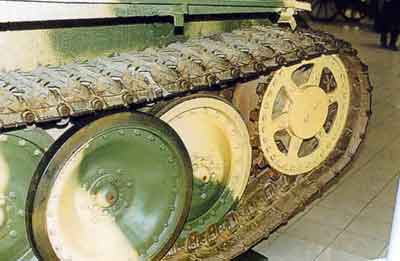

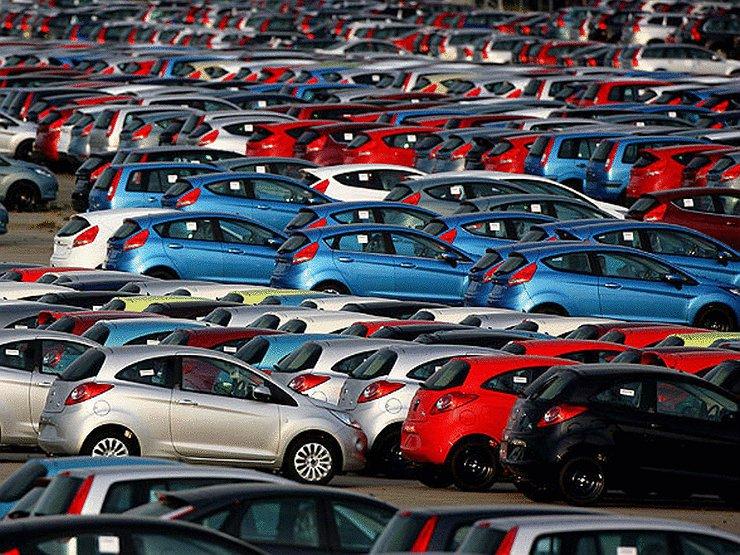
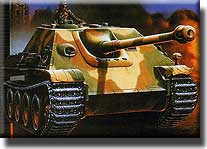 Along with the creation of the medium tank T-V "Panther", the so-called tank destroyer "Jagdpanther" was developed, in which a more powerful artillery system was installed in the fixed fighting compartment of the anti-ballistic armor than on the tank - an 88-mm semi-automatic cannon with a barrel length of 71 calibers . The sub-caliber projectile of this gun had an initial velocity of 1000 m/s and at a distance of 1000 m it pierced armor 100 mm-200 mm thick. The heavy tanks T-VIB “Royal Tiger” were armed with the same cannon. The spacious, turretless hull of the tank destroyer was made with a reasonable inclination of the armor plates. In its appearance, it resembled the hulls of the Soviet self-propelled guns SU-85 and SU-100.
Along with the creation of the medium tank T-V "Panther", the so-called tank destroyer "Jagdpanther" was developed, in which a more powerful artillery system was installed in the fixed fighting compartment of the anti-ballistic armor than on the tank - an 88-mm semi-automatic cannon with a barrel length of 71 calibers . The sub-caliber projectile of this gun had an initial velocity of 1000 m/s and at a distance of 1000 m it pierced armor 100 mm-200 mm thick. The heavy tanks T-VIB “Royal Tiger” were armed with the same cannon. The spacious, turretless hull of the tank destroyer was made with a reasonable inclination of the armor plates. In its appearance, it resembled the hulls of the Soviet self-propelled guns SU-85 and SU-100.